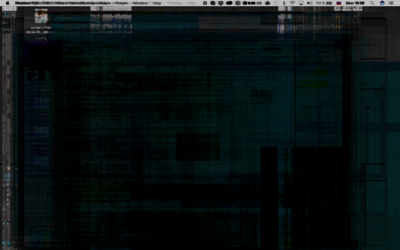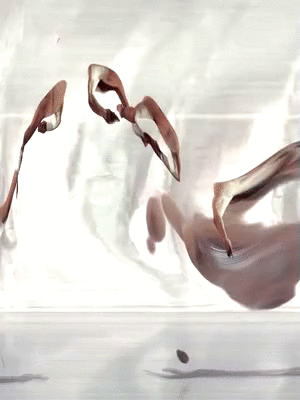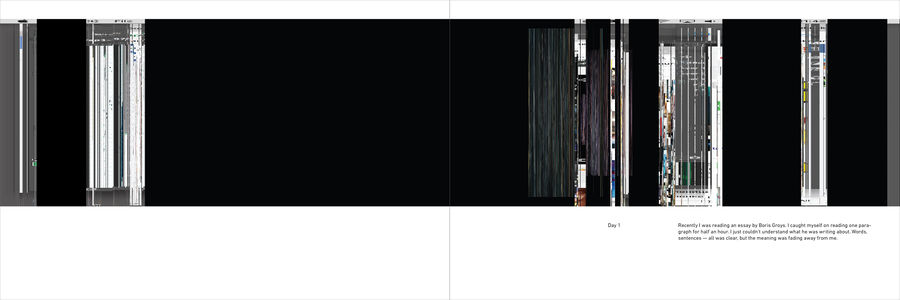User:SN/Graduate proposal
- ...
- Recently I was reading an essay by Boris Groys. I caught myself on reading one paragraph for half an hour. I just couldn't understand what he was writing about. Words, sentences — all was clear, but the meaning was fading away from me.
- ....
- Often I catch myself on staring at the screen powerless to start to work. Such moments scare me.
- ...
- This morning I spent few hours checking my Instagram and Facebook accounts. I wrote few comments and put some likes, read articles and watched some videos. I barely remember which photos I commented and what about were my comments. For half an hour I was scrolling my Instagram feed without any attention to content. Just repetitive movements of my finger on the surface of the screen and the void in my memory. I think articles were about new discoveries as some time ago I subscribed to few science magazines and NG. Now is 8 in the evening and I cannot remember any sufficient detail of what I read this morning. This activity didn't bring me joy or satisfaction, yet my morning starts and evening finishes with checking social networks. It became a reflex: you get up, clean your teeth and check the feed on social networks, the mind is not involved.
- ....
- Today I printed out an entire ebook. I cannot concentrate while reading long texts on my Ipad. Reading from the screen takes too much time.
- ...
- For 20 min I was turning on and off Hide button on one of the layers in Photoshop. I was working on the web page and tried to figure out the best way to display and structure significant amount of information. I doubt whether this monotone activity helped me to find the solution for my problem, rather avoid doing it.
These notes I take while dealing with the digital world. Smartphone and laptop have become an essential part of my life. I used to think that they help me to expedite my work. Apps with smart interfaces, plugins, and scripts that are used to optimize my workflow. But at some moment this tools stopped to be just tools, I became dependent on them. They transform the way I work, think and feel. They affected my memory and perception, leaving the feeling of void and chaos.
IDEA
In my graduation project, I continue to experiment in the field of generative design. I apply methods and practices I used before to reflect on the theme of relations between me and technology. The main piece of my project will be a video installation based on a diary of my "digital routine." I also want to make a book based on series of images (100 in total) and small notes, that I take every day. I have a script that takes screenshots every 10 seconds. It consistently works in the background while I use my computer. I also collect data about the amount of time I'm spending in different applications and what sites I'm visiting. In my intention is to gather data for 100 days, analyze and use in data visualization. I'm researching different practices and tactics to find the best visual expression of the anxiety about losing myself in a digital routine.
CONTENT
I intend to make a video installation based on data I collect. 1 minute of video equals 1 day from the diary (100minutes in total put on loop). The video is a code based animation that recreates data I collect. I plan to project it on 4 walls in the room to create the sense of being trapped and surrounded by chaotic information. The animation will have a direction and develop from left to right passing all 4 walls. Methods for animation such as slitscanning, time displacement etc, its flow, distortion and other characteristics, dependencies between these characteristics and data specificities represent the field for my research.
Here are some techniques I consider to implement in data visualization.
The book is an art book of 100 spreads. Each spread represents digital log and consists of an image and short note. Tentative format 20X30cm, thick paper, and visible board. I want to highlight its materiality, linear time scale, opposed to video projection.
Right now I'm collecting as much data as I can. I was stuck with a certain way of visualization. So I decided to step back and analyze any changes, patterns, repetitions. Reflect more on how to deal with these changes. What exactly I want to state exposing them. Answering this questions would help me to find the right way of the visualization.
TIMETABLE
10.01.17 — 20.04.17 — collecting data, experimenting with representation, a makeup of the book.
01.05.17 — deadline for the book.
01.06.17 — deadline for the video installation.
Relation to previous practice
All my previous works the same as my current project I'm working on highlight distortion and state its inevitability in any digital media.
In my previous works, I was playing with specificities of different medias, transformed and applied one on another. My projects were based on the set of roles that directs process. Sketch #004 is a video installation I made for the exhibition in Eye Museum. The piece is an outcome of several stages of manipulations of silent films which mimics the formalities of the indexing methods within the archive. My project is a creative point of view on the specificities of the storing and preserving methods and its influence on items that are stored. The categorisation processes distort the understanding of the narrative content of the silent film the same way the formal characteristics of the video distort the sound. The sound is built using granular synthesis principles and resonates with black and white video pieces from 1920's.
As an exercise for the Thematic project, we were asked to create An E-book that concatenates previous records of graduation projects. We were looking at the process as our subject, which seeps into our method. Documentation of documentation of document creates distortion and buries original object and its attributes under the layers of documentation specificities and its media attributes. Being focused on the process of documentation, we decided to pick scanning as a method and general strategy to work with content. Scanning as a process is very fragmented yet systematic with the aim of creating the exact copy of the object. But when you are scanning the scanner has no idea of the whole, the image is that of the fragmented images. We implemented scanning as a conception on different types of documentation objects. To underline disruption while documenting, while we are scanning something, there exists the framework - even it is successful or unsuccessful - just doing it once. I was working on "scanning" documents. This process brings to the surface and exaggerates all kinds of errors caused by machine malfunction and human factors. These errors reveal new aesthetic, produce unforeseen results.
Untitled originally was a performance made by Pleun and me during the thematic seminar "Chain reaction." Pleun and I played on the field of combinatory literature and chain reactions. We looked at the way Youtube autoplay and Google method of crawling the internet works and took it as a starting point. My role as an author was to establish the rules for the process, define the amount of freedom and randomness in the code that would create situations in which the error could emerge. This way the error becomes an inevitable part of the work. The result is a list of words with or within a connection among them. The reader and its subjective interpretation create connections between words. The computer pretends to be a human; human pretends to be a computer, and in between, there is a spectator who creates connections and interpretations.
Relation to a larger context
Our relationships with the machines, the way technology is changing and overriding us always were a theme for the discourse. The speculations on this topic can be found in popular culture, scientific articles, cultural and social studies.
Nicholas Carr in his essay "Is Google Making Us Stupid?" wrote: "I've had an uncomfortable sense that someone, or something, has been tinkering with my brain, remapping the neural circuitry, reprogramming the memory. My mind isn't going – so far as I can tell – but it's changing. I'm not thinking the way I used to think." Carr states that every information technology brings a set of assumptions about the nature of knowledge and intelligence. The Internet encourages the rapid, distracted sampling of small bits of information from any available source. We are becoming ever more adept at scanning and skimming, but what we are losing is our capacity for concentration, contemplation, and reflection.
Tatiana Chernigovskaya scientist in the field of neuroscience, psycholinguistics and theory of mind in one of her lectures said: "We are what we remember." Our memory is not a box with pictures or any other kind of information, not a library or database; our memory is the processes that take place in our brain. These processes are always new. Every time we recall a certain event, we recall new one. They change who we are, and technology changes them.
References
Nicholas Carr "The Shallows: How the Internet is Changing the Way We Think, Read and Remember."
Sherry Turkle "Alone Together, The Second Self: Computers and the Human Spirit"
Katherine Hayles "How We Became Posthuman"
Charlie Gere "Digital Culture"
Michael Foucault "Technologies of the Self"
Timothy Barker "Aesthetics of the Error"
Rosa Menkman "The Glitch Momentum"
Jos de Mul "The work of art in the age of digital recombination"
Casey Reas "Form + Code"
Lev Malovich "Post-media Aesthetics"
Lev Malovich "The Language of New Media"
Mark Hancen "The new Philosophy of New Media"
David Hopkins "After Modern Art"








